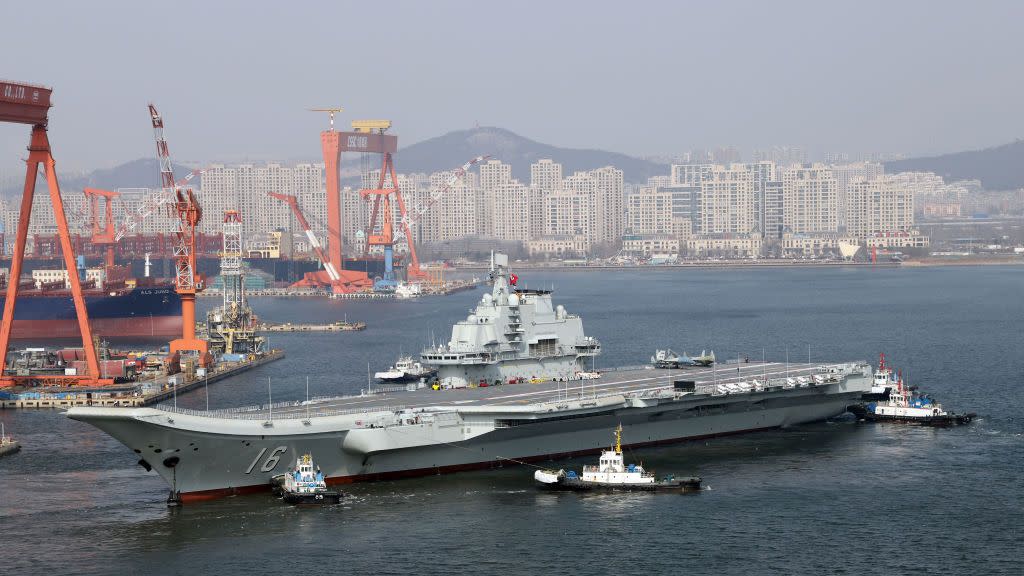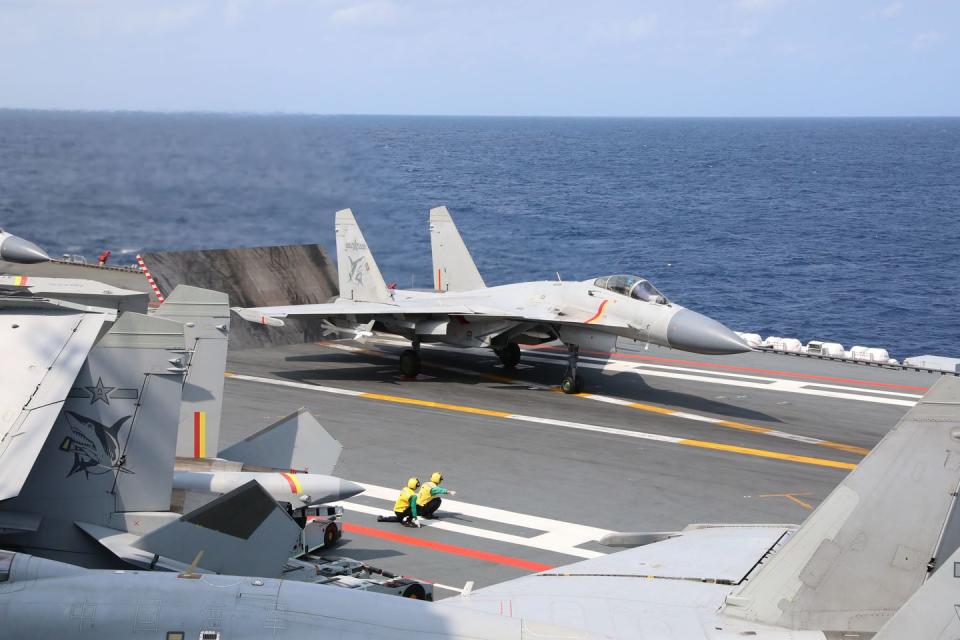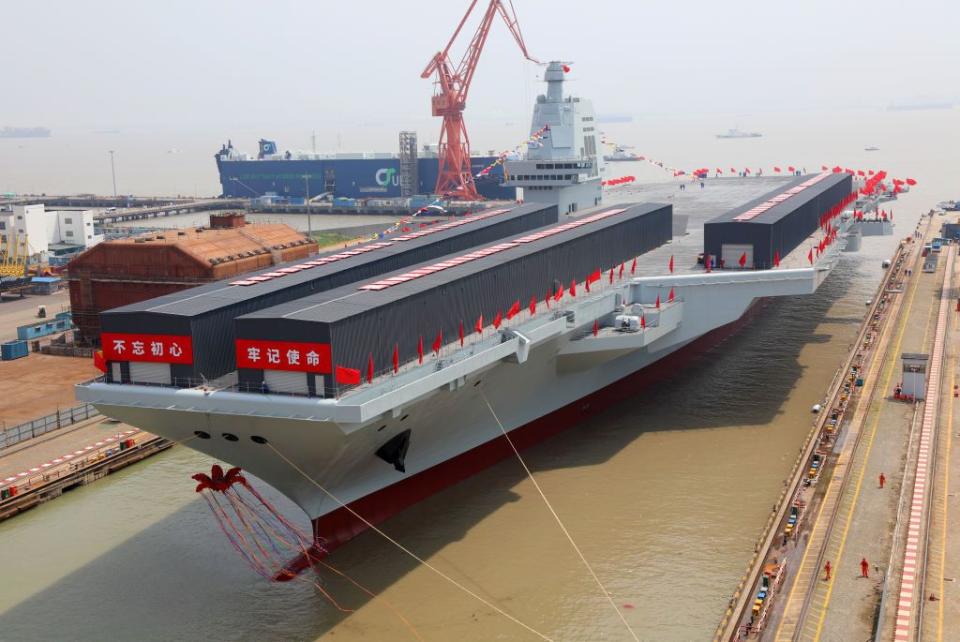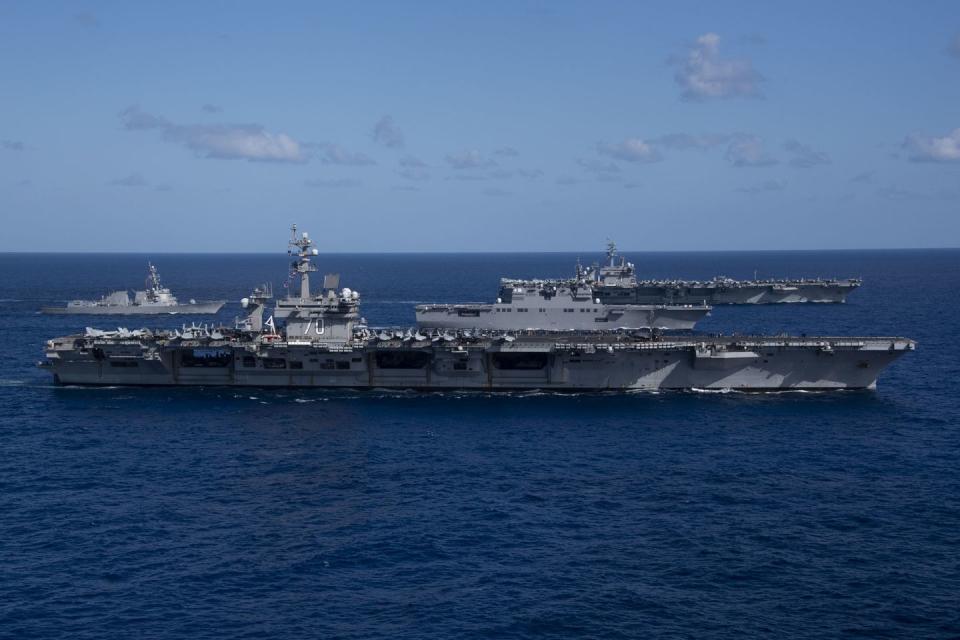China Confirms It’s Building a 4th Aircraft Carrier—and the Tables Are Turning

A Chinese admiral has confirmed that China is constructing its fourth aircraft carrier.
China commissioned its first carrier in 2012, and now has a fleet of three ships.
Although China’s carrier fleet is growing rapidly, it is still only half the size of the US Pacific Fleet’s carrier force.
China is reportedly building a fourth aircraft carrier, making it the second largest carrier power behind the United States. A report in Hong Kong state media claims that there will be an announcement “soon” on a new flat top, along with a release of technical details. The fourth carrier may be China’s first nuclear-powered surface ship—a major milestone in ship development and the key toward projecting Chinese military power abroad.
A Wink and a Nod

A reporter for the state-owned Hong Kong Commercial Daily questioned Chinese Navy Vice Admiral and political commissar Yuan Huazhi about whether or not China’s next carrier would be nuclear powered and what it would be named. Huazhi reportedly smiled when asked if the carrier would use nuclear propulsion and said there would be “an announcement soon.” He also said there were no technical bottlenecks in the construction of new carriers, and that there are no delays.
While the exchange does not sound like a definitive “yes,” multiple Chinese media outlets—including the South China Morning Post and the nationalist tabloid Global Times—have also reported the exchange as confirmation of a fourth ship.
“Political commissar” is an occupation specifically tasked with ensuring both that armed forces are properly indoctrinated in the “correct” political thought, and that sentiment running contrary to what the government wants—in this case, the Chinese Communist Party—is stamped out. There is no equivalent in U.S., NATO, Japanese, or other Western-oriented armies. Given that Yuan’s entire job is to make sure that people are given the right information and rumors are quashed, it seems unlikely he would hint that a fourth ship is forthcoming if there wasn’t one.
Number Four

China has three aircraft carriers: Liaoning, Shandong, and Fujian. Liaoning began life as a Soviet navy carrier, but the USSR collapsed before it could be finished. The unfinished hull was sold in 1998 to a Hong Kong businessman with the stated intention of turning it into a floating casino, but it was transferred to the People’s Liberation Army Navy, which commissioned it in 2012 as an aircraft carrier. Liaoning uses a less efficient ski ramp instead of aircraft catapults.
Shandong (commissioned in 2019) also uses ski ramps, and was built from the ground up as a test of China’s ability to build carriers. Fujian (which only recently completed construction) was built without a ski ramp, and instead reportedly uses an electromagnetic aircraft launch system similar to the American EMALS system on Ford-class carriers.
Each of China’s preceding carriers reached new milestones, but even the latest fell short of the ultimate aircraft carrier technology: nuclear propulsion. Nuclear power gives aircraft carriers virtually unlimited range, allowing them to sail for thousands of miles and requiring only food and munitions be carried to conduct combat operations. As of 2024, only the United States and France have built nuclear-powered carriers. If China intends to match the U.S. Navy on a technological basis, nuclear carriers are a necessary eventuality.
Get Used to It

China will likely build several more carriers. Three or four carriers also does not mean that many are available at any given time. Aircraft carriers, like other warships, suffer from the tyranny of the three: for every one ship at sea, another has just returned from sea, and a third is either in drydock or preparing to sail. This effectively means that for every three carriers a country has, it can only guarantee one at sea at all times, with the occasional ability to surge two in case of emergencies.
If China is resolute on matching the U.S. Navy, it must build as many nuclear-powered carriers as the U.S. Pacific Fleet operates. That means seven carriers to match the USS Nimitz, Vinson, Roosevelt, Lincoln, Washington, Stennis, and Reagan. Considering China has yet to build a single nuclear-powered surface ship, Chinese shipyards will likely remain humming for the next twenty years.
You Might Also Like

